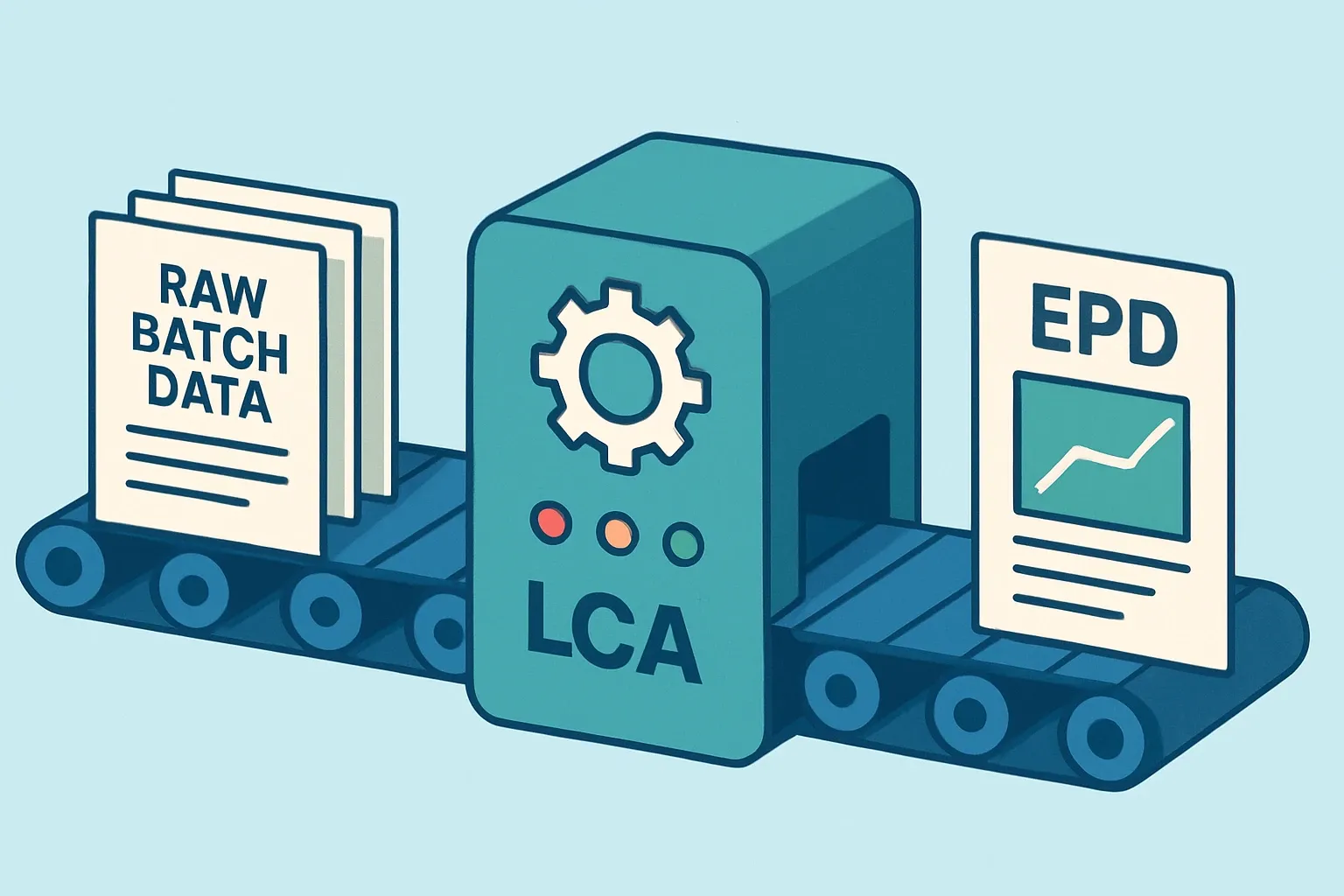Low-Carbon Concrete: Holcim’s ECOPact Playbook
Cement makes up just 10 % of the concrete mix yet drives roughly 90 % of its carbon footprint. Holcim says it can cut that burden by up to 70 % with ECOPact, while rivals CEMEX and Heidelberg are racing in with Vertua and evoZero. Here is what the numbers, the EPDs, and the fine print really tell manufacturers looking to hit the next spec.


Concrete’s carbon problem in one number
Every metric ton of ordinary Portland cement releases about 800 kg of CO₂, mainly from limestone decarbonation and kiln fuel (IEA, 2024). Scale that across 4 billion t of global cement demand and the math is brutal. Any credible low-carbon mix must slash the cement dose or swap its chemistry.
ECOPact in practice: What counts as “low carbon”?
Holcim offers three ECOPact grades: ECOPact (30-50 % lower CO₂), ECOPact + (50-70 %), and ECOPact Max (70 %+), each benchmarked against regional ready-mix baselines stated in an EPD. The key move is capping clinker factor below 60 % and adding SCMs such as slag and calcined clay. Holcim published more than 120 ECOPact EPDs in North America alone since 2023, giving specifiers project-specific numbers instead of generic marketing claims (ASTM C94 mix data, 2025).
Supplementary cementitious materials: The secret sauce
Ground-granulated blast-furnace slag can cut embodied carbon up to 45 % versus straight OPC (USGS, 2025). Fly ash supplies are shrinking as coal plants retire, so Holcim fast-tracked calcined kaolin plants in Texas and France to secure a circular flow of SCMs. Early trials show LC3 blends hitting 60 MPa at 28 days with 40 % less CO₂ than CEM I mixes (ETH Zurich, 2024).
Digital tracking and EPDs: Cutting the data lag
Holcim pipes batch-plant data straight into its LCA backbone, enabling an EPD refresh in near-real time instead of the usual six-month wait. That makes life easier for design-build teams chasing point-in-time carbon caps under LEED v5 or CalGreen. If your own ERP and weigh-bridge files live in spreadsheets, pick an LCA partner that can automate extraction, otherwise you will drown in CSV cleanup.
How Holcim stacks up against CEMEX Vertua
CEMEX positions Vertua Classic at 20-35 % CO₂ reduction, Vertua Plus at up to 50 %, and Vertua Ultra at 70 %+ using similar SCM levers. In 2024 the company reported 16 million m³ of Vertua sales, roughly 12 % of its ready-mix volume. Holcim claims 24 million m³ of ECOPact sold the same year, equal to 15 % of its mix. The gap is narrowing but Holcim’s deeper EPD library (2.5× more declarations filed in North America) still eases project documentation.
Heidelberg’s evoZero and the carbon-offset question
Heidelberg Materials skips the tiered approach and markets evoZero as “net-zero” by pairing SCM reductions with high-quality offsets. The core mix delivers only about 25 % inherent CO₂ savings; the remaining balance is wiped by forestry credits (Heidelberg CSR Report, 2025). Many public owners now bar offsets in embodied-carbon bids, so evoZero’s acceptance hinges on how an RFP is worded. If your target market bans offsets, follow Holcim and CEMEX in maximising in-mix reductions instead.
Lessons for manufacturers eyeing an EPD fast-track
- Nail down a stable SCM supply. Shortages can wreck mix consistency and void an EPD within one audit cycle.
- Capture data at the batch scale, not monthly averages. That granularity trims uncertainty and boosts declared savings.
- Publish multiple mix-specific EPDs rather than one brochure-style average. Buyers now pull your product into digital carbon calculators and inaccurate factors will push you out.
- Avoid leaning on offsets unless regulations explicitly allow them.
The takeaway for your next mix design
Low-carbon concrete is evolving from pilot to default. Holcim wins on depth of EPD evidence, CEMEX counters with global reach, and Heidelberg bets on offsets. No matter which route you choose, the real advantage comes from rock-solid data capture married to a fast LCA workflow. Skimp on either piece and the "low carbon" label wont live past the first spec review.
Frequently Asked Questions
How much CO₂ reduction does ECOPact Max claim compared to regional baselines?
ECOPact Max targets at least 70 % lower cradle-to-gate CO₂-eq than the reference ready-mix baseline documented in its regional EPD.
Which supplementary cementitious materials does Holcim rely on as fly ash supplies decline?
Holcim is scaling ground-granulated slag and calcined clay (LC3) to replace dwindling fly ash volumes, maintaining strength while trimming clinker content.
Can offsets be counted in EPDs for public projects in the United States?
Many state and municipal Buy Clean rules now disallow offsets for embodied-carbon scoring, so an EPD that hits carbon targets through in-mix reductions is safer than one relying on credits.
Why should ready-mix producers file multiple EPDs instead of one average?
Project teams upload mix-specific factors into digital calculators such as EC3. A single average EPD can over-penalize light mixes and under-state heavy ones, hurting bid competitiveness.
What is the biggest data bottleneck when preparing an EPD for concrete?
Gathering batch-level cement, SCM, and admixture dosages often takes the most time; automating that feed straight from batching software cuts weeks off the timeline.
